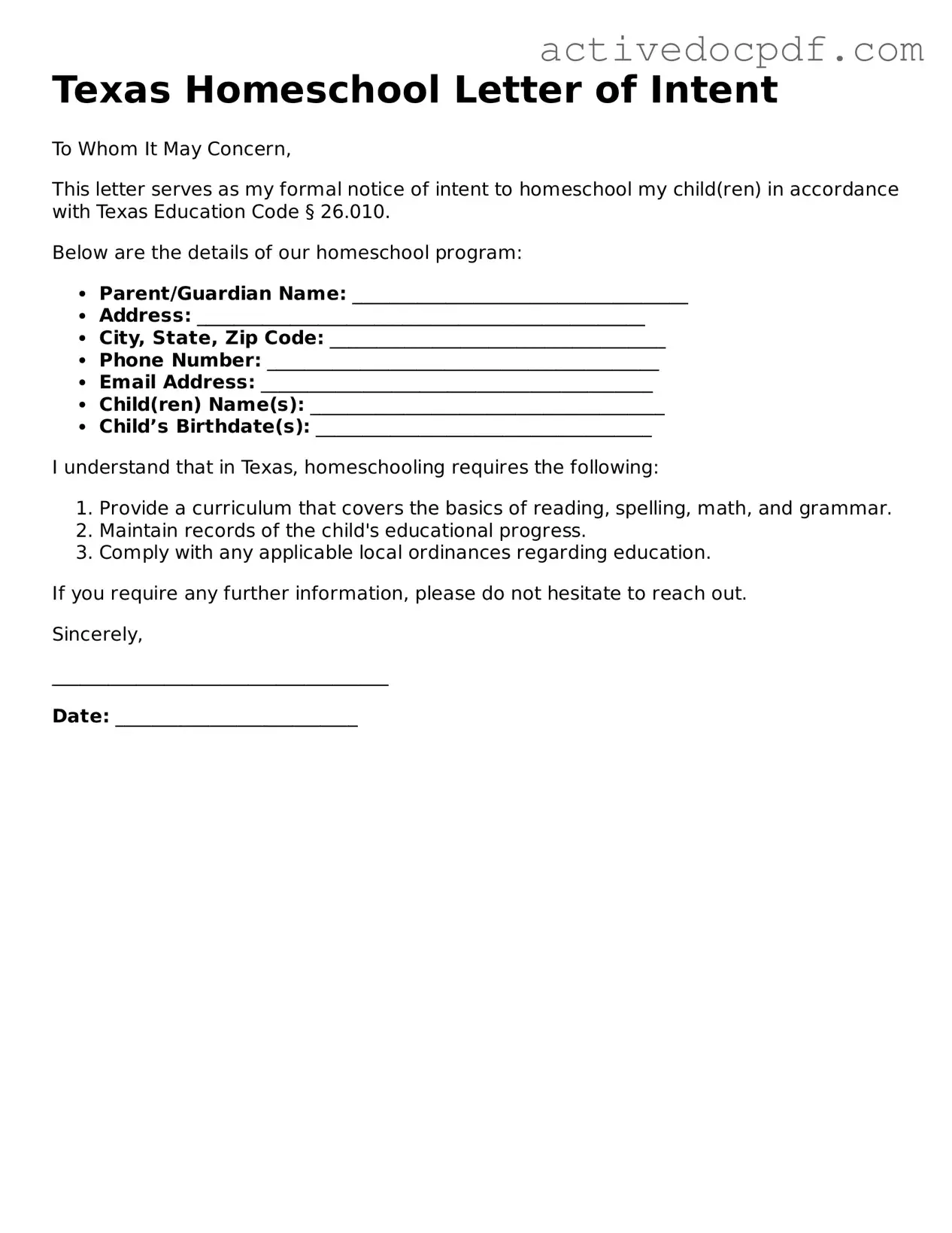What is the Texas Homeschool Letter of Intent?
The Texas Homeschool Letter of Intent is a document that parents or guardians submit to formally declare their intention to homeschool their children. This letter serves as a notification to the local school district that the child will not be attending public school and will instead receive education at home.
Who needs to submit the Letter of Intent?
Parents or guardians who choose to homeschool their children must submit the Letter of Intent. This requirement applies to children who are between the ages of 6 and 18, as they are subject to compulsory school attendance laws in Texas.
When should the Letter of Intent be submitted?
The Letter of Intent should be submitted at the beginning of the homeschooling process. Ideally, it should be sent before the school year starts or as soon as the decision to homeschool is made. This ensures that the local school district is informed in a timely manner.
While there is no mandated format for the Letter of Intent, it should include essential information such as:
-
The parent's or guardian's name and address
-
The child's name and date of birth
-
A clear statement of intent to homeschool
Providing this information helps ensure clarity and compliance with local requirements.
Do I need to provide additional documentation with the Letter of Intent?
No additional documentation is required when submitting the Letter of Intent. However, it is wise to keep records of the letter and any correspondence with the school district for future reference.
What happens after I submit the Letter of Intent?
After submitting the Letter of Intent, the local school district should acknowledge receipt of the letter. While there is no further action required from the district, it is recommended to follow up if you do not receive confirmation within a reasonable time frame.
Can I withdraw my child from public school after the school year has started?
Yes, you can withdraw your child from public school at any time during the school year. However, it is essential to submit the Letter of Intent promptly after the withdrawal to ensure compliance with Texas homeschooling laws.
What are the consequences of not submitting a Letter of Intent?
Failing to submit a Letter of Intent may lead to complications, including potential truancy issues. The local school district may view the child as absent from school, which could trigger legal obligations under compulsory attendance laws. To avoid these issues, it is best to submit the letter as soon as homeschooling is decided.
